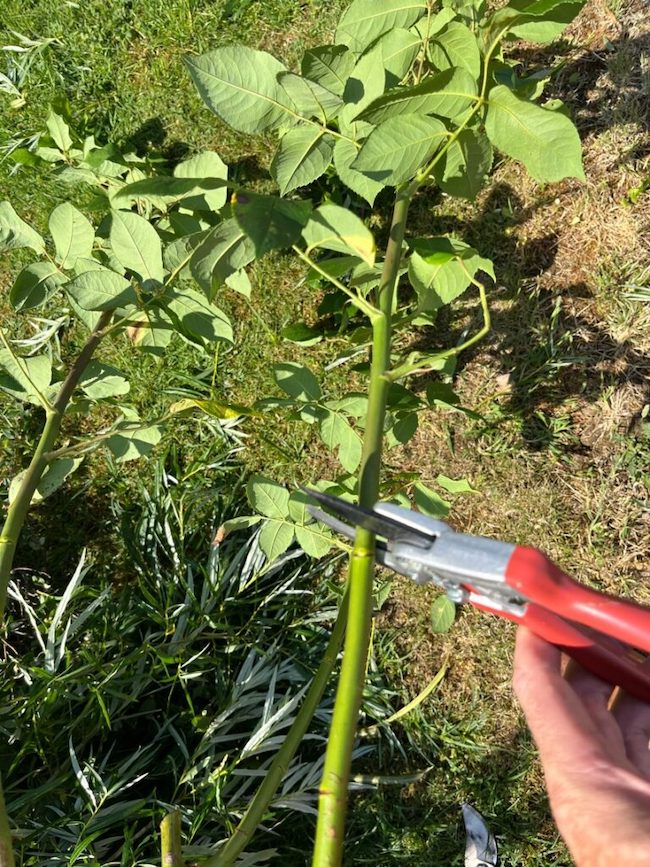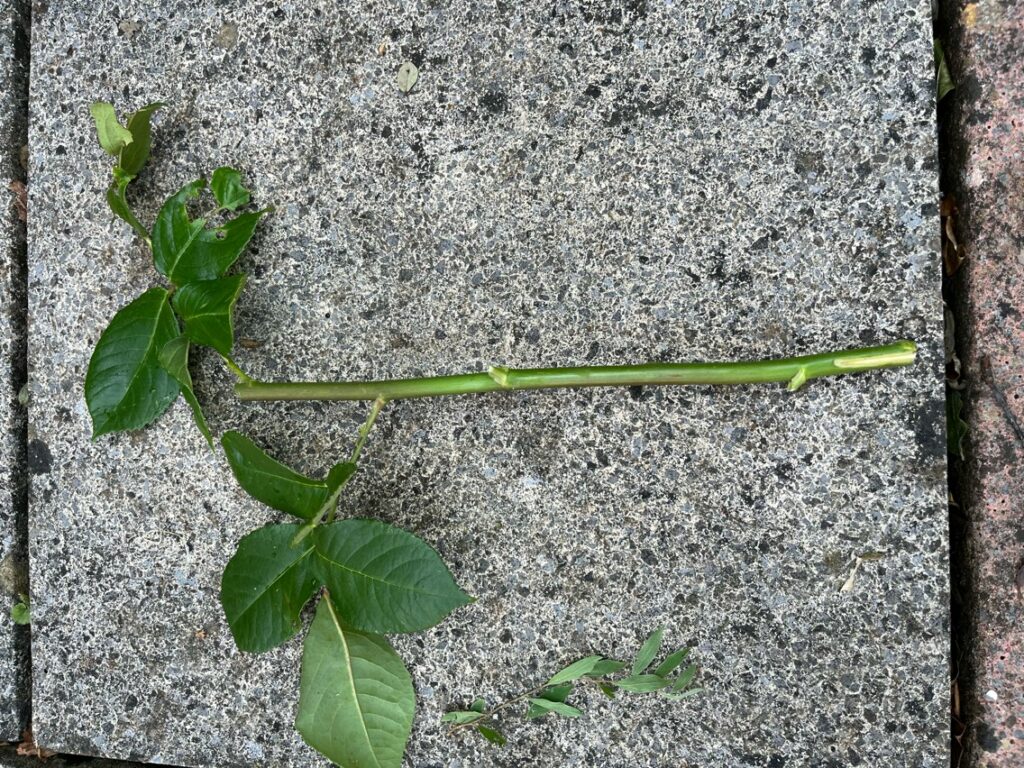
If you have come across an enchanting old rose this summer, be it climbing up an ancient stone wall, tucked into a forgotten corner of a park, or even thriving in your grandmother’s backyard, you might want to bring a piece of that beauty home. Thankfully, nature offers us an effective and straightforward way to accomplish this: hardwood cuttings. Propagating roses through hardwood cuttings is an easy, inexpensive way to multiply your collection, and summer is the perfect time to do it. Here’s how.
What You’ll Need:
- Pruners or a sharp knife
- Rooting hormone (optional)
- A pot or tray filled with a good quality potting mix
- A plastic bag or clear plastic dome
- Watering can
Steps to Take Hardwood Cuttings from an Old Rose:
1. Select the Right Stem:
Start by selecting a healthy, disease-free stem from the parent rose bush. The best candidates are stems that have recently finished blooming and are starting to harden off. The stem should be approximately the thickness of a pencil, about 8-12 inches long.
2. Make the Cut:
With your pruners or sharp knife, cut the stem just above a bud at the top, and just below a bud at the bottom. Make sure to cut at a 45-degree angle, as this increases the surface area for roots to develop and helps you remember which end is the top.
3. Prepare the Cutting:
Remove the leaves from the lower half of the cutting but leave two or three leaves at the top. This helps reduce water loss while still allowing photosynthesis. If the top leaves are very large, you can cut them in half to reduce evaporation further.
4. Rooting Hormone (Optional):
Although not necessary, applying rooting hormone to the cut end of the stem can enhance root growth. Simply dip the cut end of the stem into the hormone, and tap off any excess.
5. Plant the Cutting:
Fill a pot or tray with fresh, well-draining potting mix. Poke a hole in the soil with your finger or a pencil, then insert the cutting, ensuring that the cut end with the rooting hormone (if used) goes into the hole. Firm the soil around the cutting.
6. Provide the Right Conditions:
Place the pot in a location that gets indirect light but avoids the hot afternoon sun, which can cause the cuttings to dry out. Water the cutting thoroughly, then cover the pot with a plastic bag or clear plastic dome. This creates a mini greenhouse, maintaining high humidity levels crucial for root development.
7. Patience is a Virtue:
Check the cutting regularly to ensure the soil remains moist but not waterlogged. If you see condensation on the inside of the plastic covering, that’s a good sign that the humidity level is right.
After a few weeks, gently tug on the cutting. If you feel resistance, it likely means that roots are forming. Once you’re sure the cutting has rooted (usually in 4-6 weeks), you can remove the plastic cover and begin to harden off the new plant by gradually exposing it to the outdoor environment.
8. Transplant Your New Rose:
Once the new rose has established a strong root system and is actively growing, it’s ready to be transplanted into a larger pot or directly into the garden.
In conclusion, hardwood cuttings are an easy and enjoyable way to propagate old roses, allowing you to share the charm and beauty of these resilient flowers. While it requires some patience, the thrill of seeing new growth






















